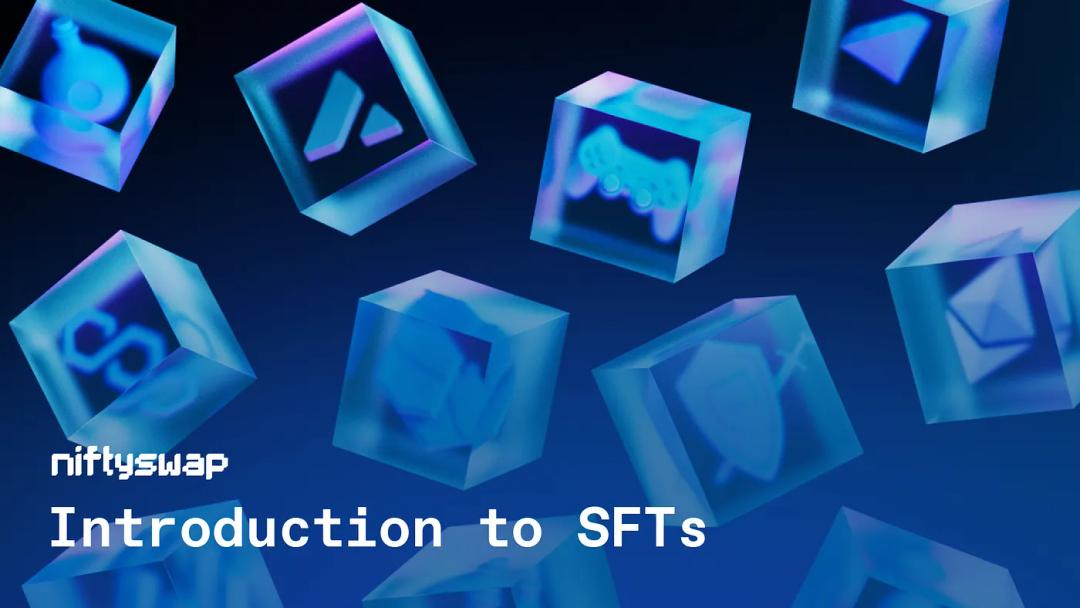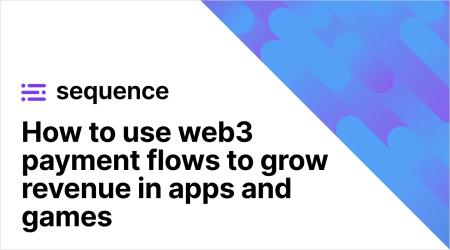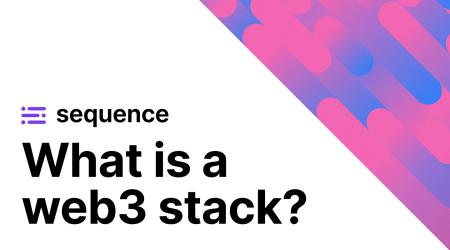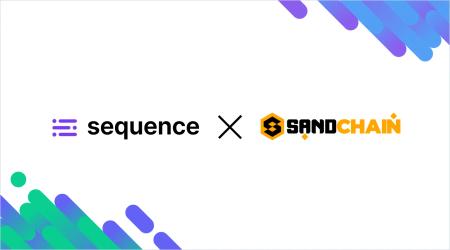Introduction to Semi-Fungible Tokens (SFTs)
February 9 2023

The new standard for web3 game and metaverse items, digital fashion, memberships, and more.
Semi-fungible tokens (SFTs) unlock new kinds of tradable virtual world assets and experiences and are particularly well suited for in-game items, metaverse collectibles, digital fashion, music, memberships, and other virtual goods for which there are multiple copies. Before diving into SFTs, let’s quickly explain fungible tokens and non-fungible tokens (NFTs).
Definitions
Fungible tokens
Fungible tokens are interchangeable. For example, since there is no difference between one USD Coin (USDC) and another, exchanging individual USDC won’t result in any value change. The USD Coins share the same value — it doesn’t matter which USD Coin you have because they’re functionally identical. Most fungible tokens are built with the ERC-20 token standard in the Ethereum ecosystem.
NFTs
An NFT signifies ownership of a unique asset that can be cryptographically verified on a public ledger. NFTs may be used to represent one-of-one pieces of art, digital or physical goods, in-game assets such as avatars, and domain names. The attributes of an NFT, such as its rarity, utility and the reputation of its creator may determine the value of each item. Because each NFT is unique, it cannot be swapped one for one. Unlike fungible tokens such as USDC, NFTs are not interchangeable. Most NFTs use the ERC-721 standard while others use the ERC-1155 standard.
SFTs
SFTs are a versatile class of tokens that combine characteristics of fungible tokens and NFTs. SFTs, which use the ERC-1155 standard, can be exchanged one for one with other identical SFTs, but an SFT cannot be exchanged one for one with a non-identical SFT, even if it is part of the same contract address.
Let’s use SFTs in the trading card game Parallel to illustrate the above point: the Prime Key card can be exchanged one for one with another Prime Key card because they are like-for-like assets. However, the Prime Key card cannot be swapped one for one with a Catalyst Drive card because they’re different. The Catalyst Drive card has different artwork, mechanics, total supply, and trades at a different price. The fungibility and uniqueness of SFTs are enforced by smart contracts on-chain.
Gaming
SFTs are poised to enhance video games by unlocking brand new design space, enabling liquid and healthy markets, delivering user and developer benefits, and birthing new use cases.
Sunflower Land
The farming simulation game Sunflower Land highlights how the dynamic nature of SFTs can differentiate and elevate identity-focused and utility-driven games. Bumpkin NFTs represent farmers that can be customised with SFTs to embody players’ identities, such as the rare Sunflower Shield SFT which is limited to only 60 items. Other SFTs equip Bumpkins with items to help build their farming operations, such as the Chef Apron SFT that gives players extra in-game boosts.
Galaxy Fight Club
Similarly, PvP game Galaxy Fight Club leverages SFTs for their virtual wearables — in this case, weapons. Galaxy Fighter NFTs come with their own weapons that can be swapped for weapons such as the Genesis series Katana SFT or Slingshot SFT. Different weapons and different series provide distinct utility and access, with holders of Genesis series weapons eligible to receive Gold Keys that enable them to win high tier in-game loot.
The Sandbox
The Sandbox is one example of a metaverse gaming project that allows users to use the ERC-1155 token standard to create multiple gaming items, including skins, in the same contract. The Video Game skin is viewed as an asset and with the flexibility of ERC-1155 tokens, creators could mint any number of copies of the same digital assets. Creating multiple copies of the video game skin allows asset designers to mint a collection of items that they can sell on The Sandbox’s marketplace for game designers to purchase and use.
Traditional game items are like SFTs, but without the web3 benefits
Most game items from traditional web2 video games — including trading cards, skins, weapons and gear — work like non-blockchain versions of SFTs. In other words, most game items have multiple copies, instead of each item being totally unique. Of course, the downside to traditional video game items is that you can’t really own them and trading is usually prohibited.
Now let’s dive into why SFTs are great for gaming.
Why SFTs are great for gaming
The emergent ERC-1155 SFT standard combines elements of ERC-20 and ERC-721 to make it adaptable and versatile, characteristics that make SFTs perfect for gaming. An in-game asset can start as a fungible item and evolve as the player proceeds through the interactive world. Using the SFT standard, developers can create skins, cards, and other game items, and can create both fungible in-game currencies or unique non-fungible items like virtual real estate and trophies. The SFT standard can represent almost any kind of asset, which leaves the design space open for creators. The ability of SFTs to integrate numerous tokens into a single contract makes them highly cost efficient for developers, while they simultaneously facilitate price discovery and improve market liquidity.
SFTs enable batch transfers of fungible tokens and NFTs. With SFTs, gamers can transfer in-game currencies and unique items like virtual real estate in a single transaction. SFTs also enable multi-transfer, which involves transferring to more than one address in one smart contract. On top of enhancing flexibility and purchase flow, single transaction batch transfers and multi-transfer capability reduce gas costs for users.
The creators of leading blockchain games and developer tools — Horizon, The Sandbox, and Enjin — created the ERC-1155 SFT standard in 2018 out of necessity. They needed a new standard to unlock use cases, represent different kinds of game items, and enable efficient trading for more sustainable gameplay models.
While unique items (i.e. NFTs) can strengthen certain experiences within a game, they can just as easily hinder an experience if the virtual constraints are not considered. For example, a sword in the real world can be broken down to utilize the components for trade or something else. In the virtual world, this does not come by default. As such, developers need to consider how composable they want their world to be. Without SFTs, it would be less efficient and more complex to combine a virtual pound of steel with another pound of steel, and it would be similarly complex and inefficient to bunch a virtual apple with other apples for sale.
Furthermore, with respect to trading, unique items require bartering. While bartering can be fun, it may not be perceived that way if it only exists on account of a technical limitation. SFTs make trading much more efficient and user-friendly. To illustrate this point, let’s use Horizon’s web3 trading card game Skyweaver as an example.
Skyweaver and SFTs
In Skyweaver, there are 600 unique cards, and each exists as a Silver and Gold version.
If every one of the Skyweaver cards used the ERC-721 NFT standard, price discovery and trading would be difficult because the supply of each card would equal one. In other words, there’s no liquidity for a unique item, making it difficult to buy and determine a fair price to sell the item for. In the context of NFTs, individual buyers and sellers must negotiate a price, which is time-consuming and inefficient.
Buyers and sellers of unique items trying to find one another — an inefficient process
By making Skyweaver cards SFTs, deep liquidity can allow for the instant buying and selling of cards on the secondary market. This ability to instantly buy or sell a game item makes the user experience much more intuitive and seamless.
Buyers and sellers of SFTs buying and selling instantly — an efficient process.
Using SFTs also helps avert the choice overload that would arise from using the ERC-721 NFT standard, where players would be required to select one of many identical cards. The use of SFTs avoids an additional cognitive load that could impact purchase flow by unnecessarily complicating the player decision-making process, detracting from the buying experience, decreasing player satisfaction with their selection, and increasing the likelihood of purchase abandonment.
While the ERC-1155 SFT token standard is highly suited to web3 gaming, it also brings equivalent benefits to a range of digital assets with multiple copies, such as digital fashion and memberships.
Digital fashion
Digital fashion will increasingly embrace the ERC-1155 standard because its dynamic characteristics allow for personalization. This is pivotal for creators looking to capture a share of the expanding market of customizable virtual goods that enable personal expression.
The use of SFTs by Nike-owned virtual collectibles studio RTFKT showcases an innovative digital fashion application alongside the capability SFTs have to change state.
The RTFKT x Nike AR Hoodie and the RTFKT x Nike Air Force 1 — Murakami DNA sneakers are examples of phygital — digital plus physical — items. These SFTs can be “forged”, a term RTFKT uses for the process where a holder burns an ERC-1155 SFT and receives an ERC721 token that can be redeemed for physical goods.
Membership
Membership access providing tiered levels of utility is a notable use case for SFTs.
For example, a ZenAcademy Genesis SFT membership could grant holders access to NFT analyst Zeneca’s private Discord and online courses. Meanwhile, a Club 333 SFT membership could grant holders access to roundtable conversations with Zeneca and unique opportunities within the Club 333 circle. A ZenAcademy Genesis membership is interchangeable with all other ZenAcademy Genesis memberships but holders wouldn’t be able to swap a ZenAcademy Genesis SFT for a Club 333 SFT.
Another example of a membership SFT is the Adidas Originals Into the Metaverse collection. Holders can burn their SFT to redeem exclusive physical goods from the athleisure giant. Phase 1 saw holders burn one ERC-1155 SFT to receive a Phase 2 SFT and three exclusive items of physical merchandise. Phase 2 holders were later airdropped the Adidas Originals Meta Capsule, an ERC-721 NFT.
Conclusion
SFTs are more versatile than their NFT counterparts, which make them excellent for gaming and in any other context where a virtual item has more than one copy. SFTs open up new design space for developers, make markets more efficient, and enable better user experiences. While NFTs have emerged as the go-to digital art and real estate standard, SFTs are poised to become the prominent tradable assets for web3 gaming and collectibles.
For an instant, easy and secure SFT trading experience, check out Niftyswap.io.
If you’re a builder seeking your own in-game or in-app marketplace, check out Marketplaces, a new component of the Sequence developer stack powered by the open-source Niftyswap Protocol. You can implement your own marketplace quickly and easily by leveraging our no-code, white-label marketplace solution. Or, leverage our Marketplace SDK for greater customization. In either case, you’ll deliver a seamless trading experience to your users, and you’ll be able to monetize the economic activity in your ecosystem by charging fees.
To leverage Marketplaces in your web3 game or app, or to ask us any questions about SFT integrations in Sequence, feel free to reach out on Discord. We’d love to hear from you!
Website | Twitter | Discord | Documentation
Sequence makes building onchain simple. Developers and teams can launch, grow, and monetize apps with unified wallets, 1-click cross-chain transactions, and real-time data, all in a modular and secure stack. No more stitching together fragmented tools or battling poor user flows. Sequence is production-ready infrastructure that helps teams ship faster, onboard more users, and scale confidently. From chains and stablecoins to DeFi and gaming, Sequence powers developers and applications across the EVM ecosystem with billions in transaction volume and millions of users. Trusted by leaders in blockchain, Sequence powers today’s onchain apps and delivers future-proof infrastructure for tomorrow’s breakthroughs. Learn more at sequence.xyz.
Written by

Robert Guenette
Product Marketing DirectorRelated Posts

Web3 payment flows allow any app to embed onchain purchases and interactions in a way that feels natural for users. Learn more about them!

As more applications and protocols move onchain, indexers redefine how dev teams access, organize, and use blockchain data. Learn how!

What exactly is a web3 stack, and how does it differ from traditional architecture? Let's break down this concept and explain its components!

With SANDchain and Sequence, along with the launch of SANDchain Builder, creators now have everything they need to launch and scale web3 experiences!









